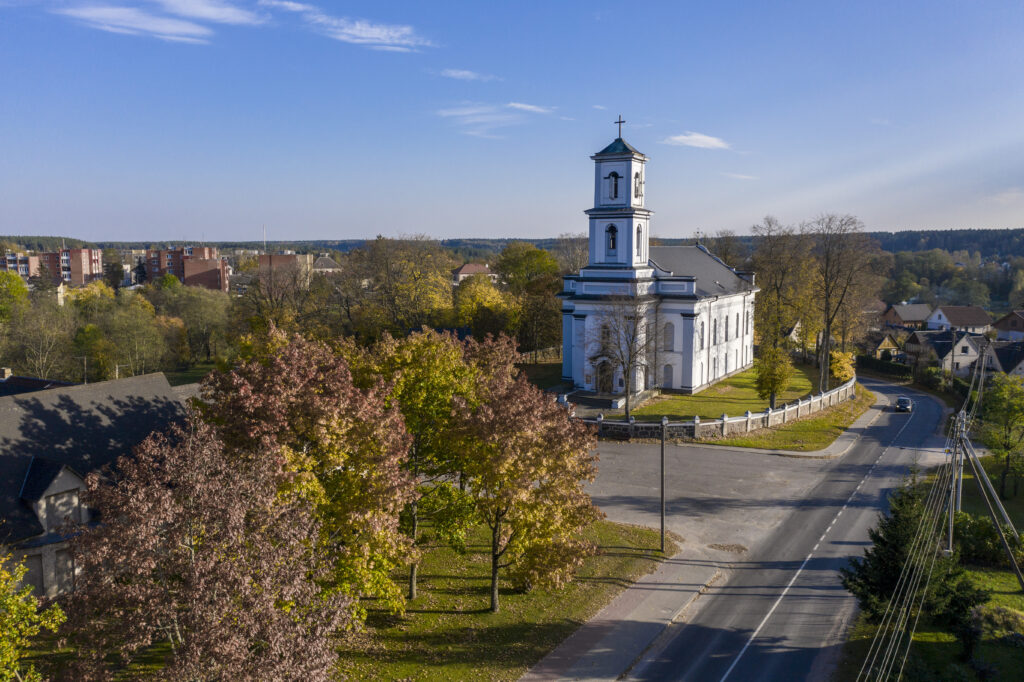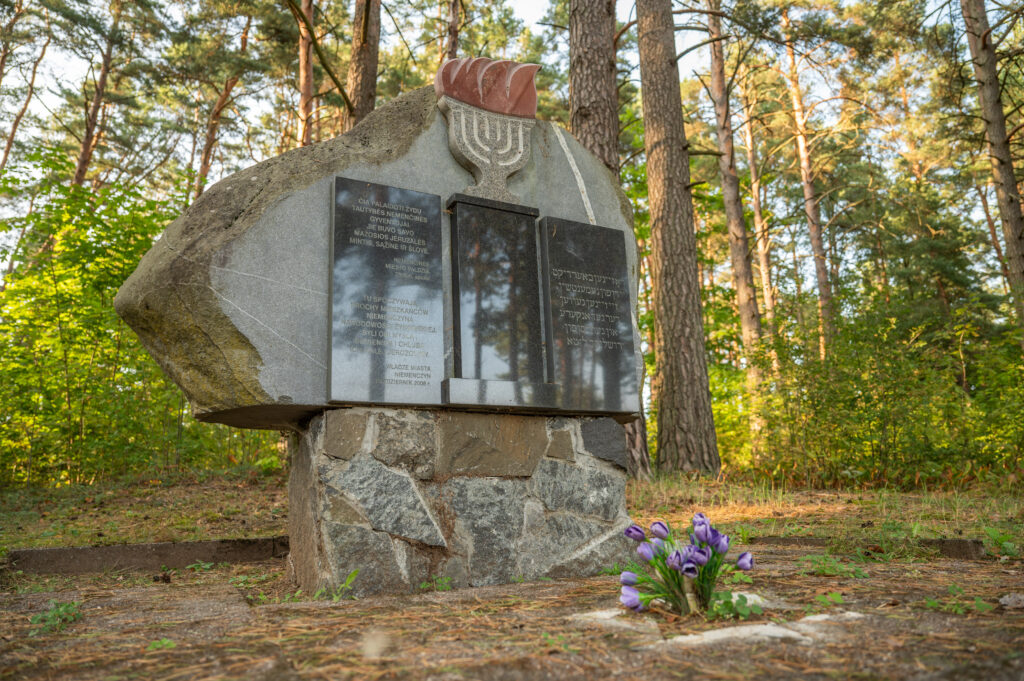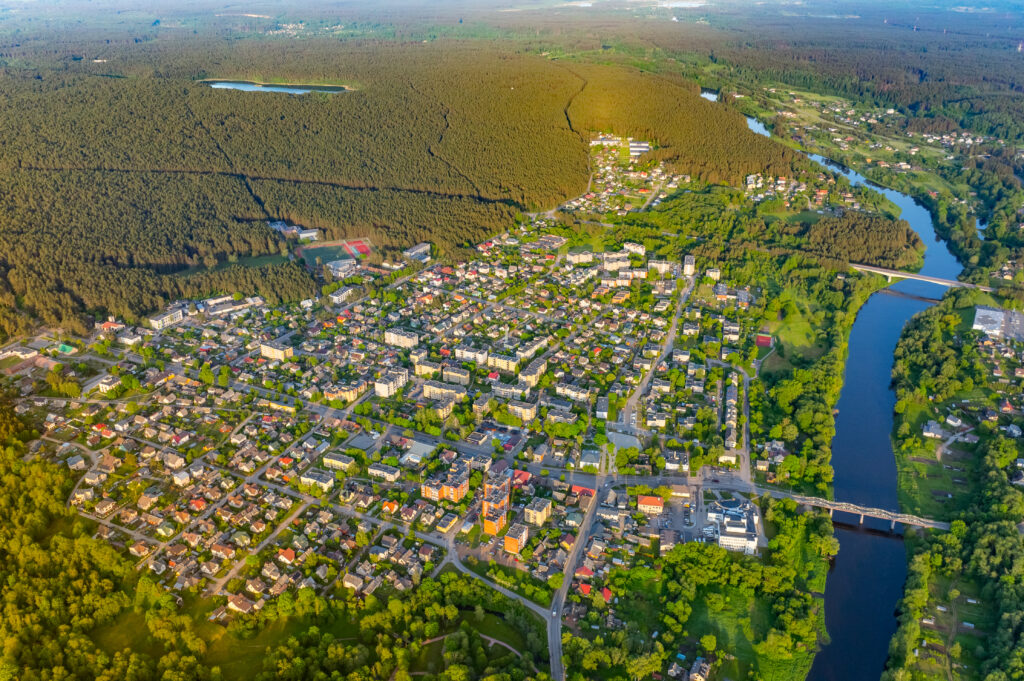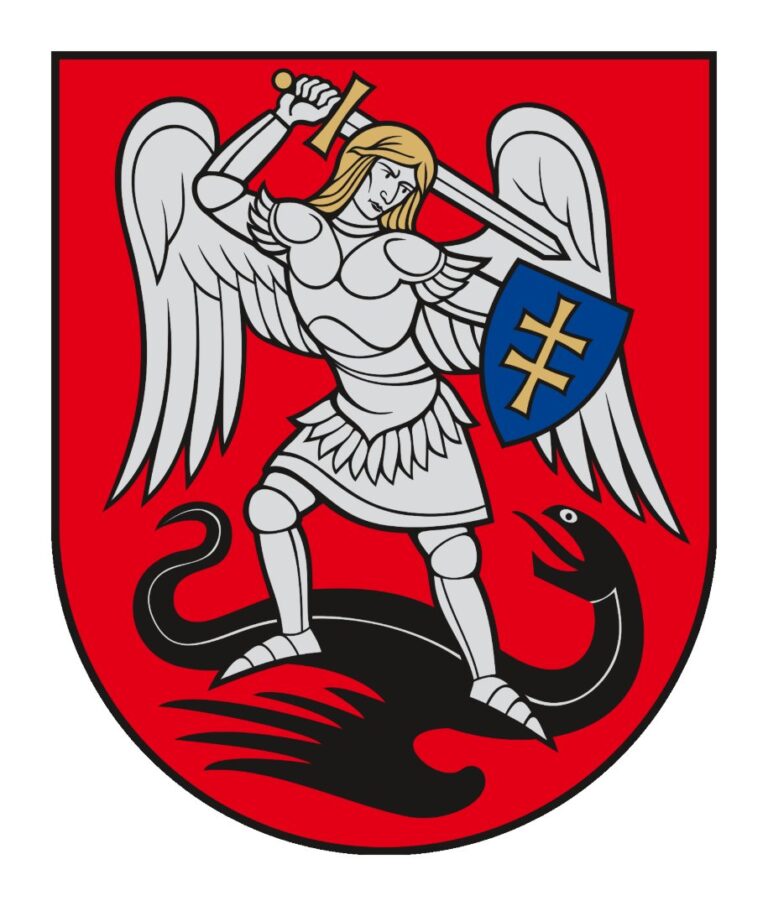Nemenčinė
Nemenčinė is the only town in the Vilnius District. It is located in a picturesque setting, surrounded by pine forests and bordered between two rivers—Vilija (Neris) and Nemenčinė
River. It is believed that the town took its name after the latter.
The town lies just 20 km northeast of Vilnius and is only 15 years younger than Lithuania’s capital. Vilnius dates back to 1323, while Nemenčinė was first mentioned in 1338. Two important roads pass through the town: Vilnius–Švenčionys–Zarasai (No. 102) and Jieznas–Maišiagala–Nemenčinė (No. 108). As of January 1, 2024, the town’s population was 4,688.
A Multinational Town with a Coat of Arms
Nemenčinė has been a multinational town for centuries, much like the entire Vilnius region. It hosts the administrative offices of both the urban and rural elderships, both located on the town’s main street, Švenčionių Street.
The town covers 393 hectares, of which 87 hectares are forest and 17 are water bodies. Since July 26, 2004, Nemenčinė has had its own coat of arms, depicting Saint Archangel Michael, the patron of the town and parish, battling a dragon. The Jagiellonian dynasty’s coat of arms is also featured on the shield.
One of the Wealthiest Parishes
Although Nemenčinė was first mentioned in 1338, archaeological findings reveal that people lived here much earlier. About 1.5 km north of the town, by the Nemenčinė River, lies a 1st–6th century mound known as ‘Castle Hill’. According to legend, a wooden castle stood there during the reign of King Mindaugas. Today, this site hosts celebrations for King Mindaugas’ Coronation Day, a national holiday in Lithuania.
On November 1, 1338, Grand Duke Gediminas signed a ten-year peace and trade treaty with Livonia, where Nemenčinė was mentioned for the first time. In 1387, one of the first seven Catholic churches in Lithuania was built here by Władysław II Jagiełło to spread Christianity.
The church was consecrated in honor of the Assumption of the Blessed Virgin Mary, Saint Adalbert, and Saint George.
As a royal estate, Nemenčinė received generous funding, and its parish was considered one of the wealthiest in Lithuania—a status it retains to this day.
A Town of Uprisings
In 1550, Nemenčinė stood on the Polotsk route and featured five taverns, a marketplace, a bridge (which was frequently damaged by floods), and, since 1611, a ferry service. In 1613, the town appeared on a map of the Grand Duchy of Lithuania. It suffered greatly during the Great Northern War (1700–1721). By 1777, a parish school was already established here.
On April 27, 1794, near Nemenčinė, the forces of the Kościuszko Uprising clashed with Russian troops. Battles also took place in the area during the 1830–1831 Uprising. The insurgents were led by Konstantinas Parčevskis, owner of a nearby Red Manor estate, whose detachment numbered around 1,000 men. Emilia Plater, a famed figure in the uprising, joined his unit. After the uprising was suppressed, Parčevskis emigrated to France, where he died in 1855.
In his honor, a local gymnasium bears his name, and a street in Nemenčinė is named after the Parčevskis family, which significantly contributed to the development of the region.
From 12 to 220 Houses
Since 1803, Nemenčinė became the educational benefice of Vilnius University, providing pensions for retired professors. After the university was closed, the town became state property of the Russian Empire. In 1865, a state school opened, and in 1895, a pharmacy was established.
In 1833, the town had only 12 houses (two of them brick), but by 1897, the number had grown to 220. At the beginning of the 20th century, the town had a wooden synagogue, an Orthodox church (built in 1905), and a Catholic church—the only one that remains today.
During World War II, the Nemenčinė area was an active base for units of the Polish Home Army.
The Tragedy of the Jewish Community
Before the war, Jews made up 35% of Nemenčinė’s population. Sources suggest that the Jewish community was established here either in the 17th century or in the late 19th century. However, on September 20, 1941, the Nazis and their collaborators executed almost all of the town’s Jewish residents—403 people were shot just 3 km from Nemenčinė. A marble monument now stands at the site, where students from Konstantinas Parčevskis Gymnasium light candles every
year in memory of the victims.
A Great Place for Recreation
After World War II, about 6,000 Poles were deported from the area to Poland. From 1950 to 1962, Nemenčinė served as a district center. The construction of apartment buildings began in 1950, and in 1955, Nemenčinė was granted town status.
From 1950 to 1962, Nemenčinė was the center of the district. Starting in 1950, apartment buildings began to be constructed here, and in 1955, Nemenčinė was granted city status.
From 1971, there were plans to expand the city as a recreational zone center for Vilnius—that is, to maintain its status as a traditionally recognized excellent place for rest and relaxation. For this reason, Nemenčinė did not have, and still does not have, large industrial enterprises.
Social Activity
During the period of regaining independence, Nemenčinė was unofficially dubbed the Polish capital of the Vilnius region, as many ‘Polish’ initiatives took place here. The most important of these was the Polish Cultural Festival ‘Polish Flowers’, initiated by Gabriel Jan Mincevičius. The local Poles, organized in the LLP (Lithuanian Polish Union) Nemenčinė branch, were very active. They organized numerous meetings with prominent scholars and historians such as Roman Korabas-Żebryk, Professor Irena Sławińska, Professor Romualdas Brazis, Dr. Medardas Čobotas, and Dr. Jan Ciechanowicz.
Through social work, the graves of legionnaires in the local cemetery were restored, as well as the graves of those who died fighting the Bolsheviks. Members of the LLP and other residents of Nemenčinė actively participated in the ‘Baltic Way’. On August 23, 1989, about two million people from Lithuania, Latvia, and Estonia joined hands, forming an uninterrupted human chain over 600 kilometres long, stretching from Vilnius through Riga to Tallinn. In 2009, this exceptional act of unity was inscribed on UNESCO’s ‘Memory of the World’ register, securing its firm place in history.
An initiative started by board members led to Nemenčinė becoming the site of the Nemenčinė Kaziukas Fair over the course of 30 years.
A Backup Capital
Less known to the wider public is the Soviet authorities’ intention at that time to turn Nemenčinė into a backup capital of Lithuania in case Vilnius were struck by a potential nuclear attack. In the first half of the 1970s, concrete shelters and bunkers began to appear in Nemenčinė and the surrounding forests like mushrooms after rain. These were meant to protect the military leadership and the highest party officials from the consequences of a nuclear strike.
Nemenčinė
churches in Lithuania was
built in the town

on the map of the Grand<br Duchy
of Lithuania
in Nemenčinė
town has increased to 220
community of Nemenčinė<br was
destroyed

center
status of a city

its own coat of arms
